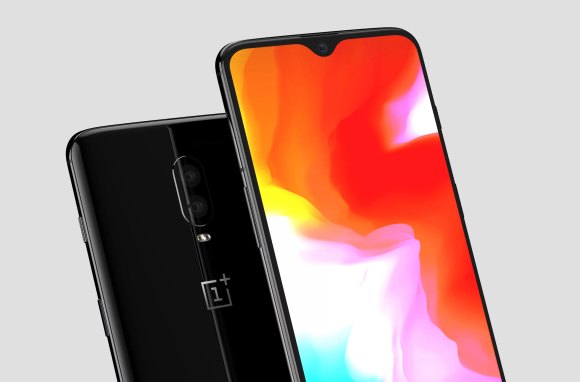The OnePlus 6T is a slightly more advanced variant of the OnePlus 6. The device has face unlock and also a fingerprint sensor. Based on Android Oreo, the device features a 6.4-inch Full HD+ Optic AMOLED display. It is powered by an octa-core Snapdragon 845 SoC paired with 6GB of RAM and comes with 64GB of onboard storage space. Backed by a 3,500mAh battery, the smartphone is equipped with dual 16+20MP rear and a 16MP front-facing shooter.The latest release date the OnePlus 6T will be announced on October 17.

You can see from these that the phone has a teardrop notch housing a single-lens camera on the front, a slim bezel below the screen and a dual-lens camera on the back.
That phone has a 16MP variable aperture lens which can switch between f/1.5 and f/2.4 apertures, a 20MP f/2.6 lens and a ToF (time-of-flight) 3D stereo lens. That last one can measure depth, making it useful for both the ever-popular bokeh/portrait mode and augmented reality.
Introduction and Display
Similar to the other OnePlus smartphones, the OnePlus 6 too is followed by the OnePlus 6T. The T-variant ships with a bigger screen and a more efficient battery while everything else remains unaltered. The OnePlus 6T sports a rear-mounted fingerprint sensor which is placed below the rear camera module and has been strategically placed to ensure fuss-free access.
The screen on the OnePlus 6T is a tad bigger than what we saw on its predecessor. The 6.4-inch Optic AMOLED Full HD+ display which is paired with excellent viewing angles is ideal for watching videos or playing games. Also, the screen features a coating of Corning's Gorilla Glass 5 protection.
The OnePlus 6T comes with a 16-megapixel front-facing camera which is bundled with features like HDR, Screen Flash, Smile Capture, and Face Beauty. You can also capture Portrait shots. At the back, the dual 16+20-megapixel shooters come with OIS and EIS support, and along with a dual LED flash it can be used to shoot detailed images and videos even in the most demanding conditions. One can also shoot 4K resolution videos at 30/60 fps.
Power and Performance
The OnePlus 6T is armed with an octa-core Snapdragon 845 chipset which is coupled with 6GB of RAM that promises a smooth and seamless experience even while you work on multiple apps at the same time or play games for an extensive period.
On the software front, the smartphone runs the bloatware-free proprietary Oxygen OS wrapped under Android Oreo.
Headphone jack and Battery
OnePlus has confirmed the 6T will not have a headphone jack
It will include a 3.5mm jack adapter in the box
It won't have one. OnePlus co-founder Carl Pei has exclusively confirmed that its next handset will drop the headphone jack.
For power, the OnePlus 6T is fuelled by a non-removable Li-Ion 3,700mAh battery which can easily last for an entire day even with heavy usage. For users with extreme usage pattern, there is fast charging (5V 4A) support too.
Storage and Connectivity
The OnePlus 6T ships with all the options that were seen on the OnePlus 6 concerning connectivity. The options include 4G with VoLTE support, dual SIM slots, GPS, Bluetooth 5.0, Wi-Fi 802.11 a/b/g/n/ac, NFC, and a USB Type-C port.
The handset is loaded with 64GB of non-expandable internal storage space.

